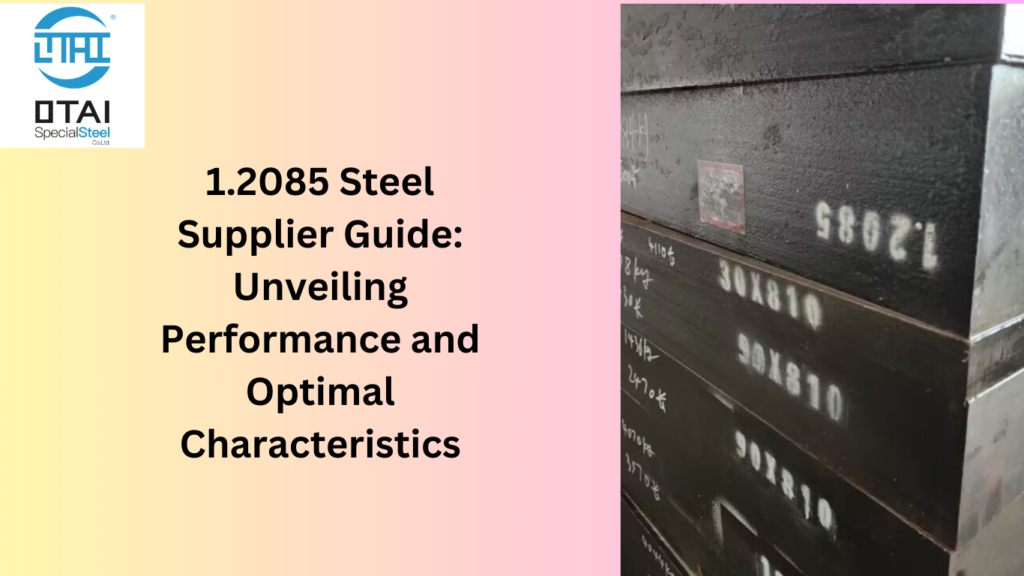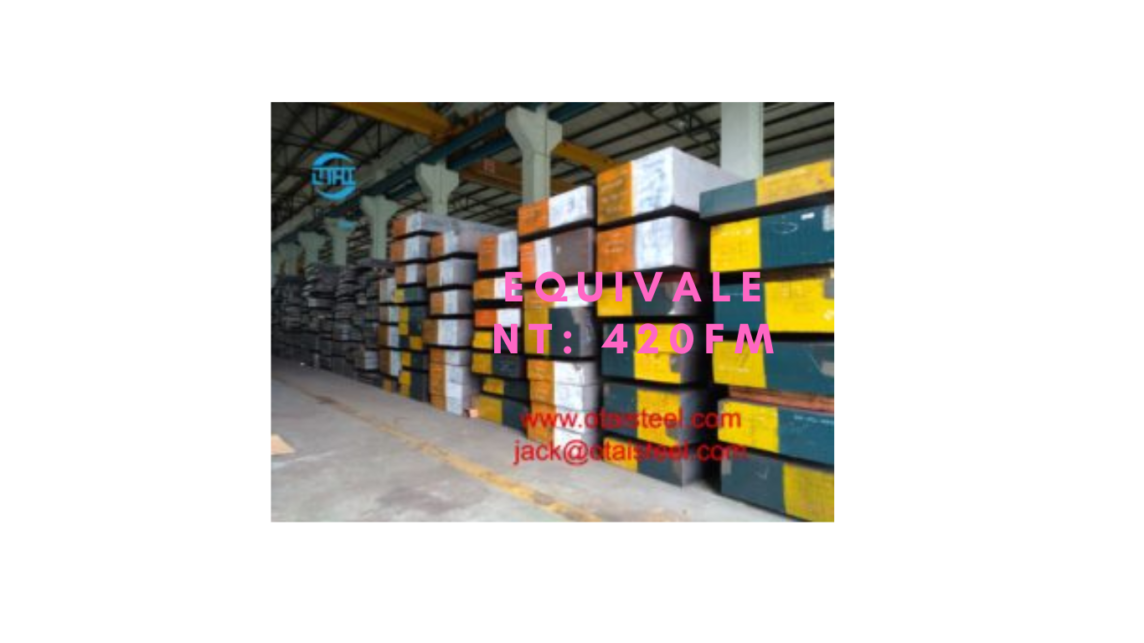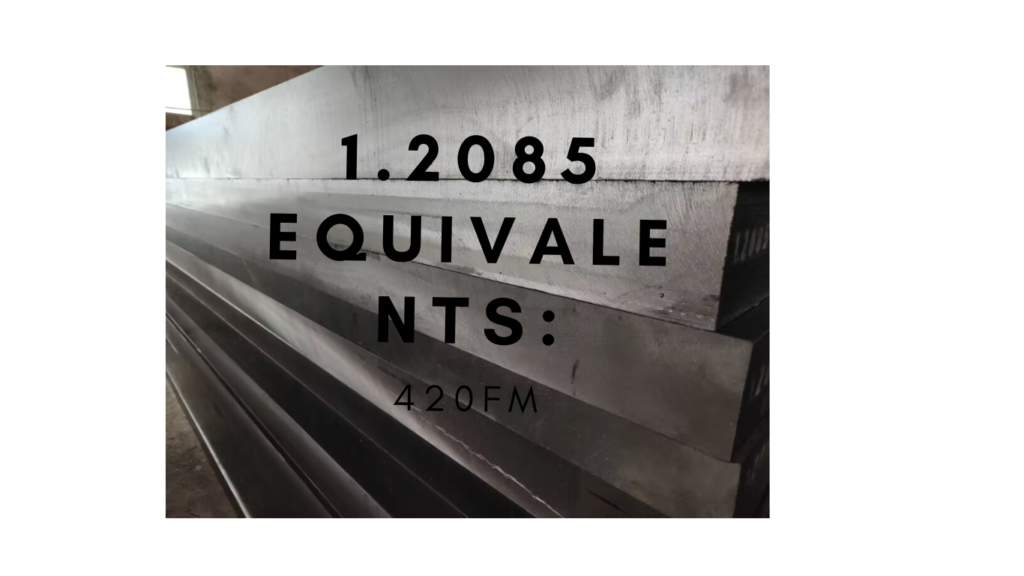 In the realm of corrosion-resistant martensitic stainless tool steels, 1.2085, also identified as X33CrS16, emerges as a stalwart material with a myriad of applications. This article serves as a comprehensive guide, shedding light on the key features that define 1.2085 steel and offering insights into the crucial process of selecting a top-tier 1.2085 steel supplier.
In the realm of corrosion-resistant martensitic stainless tool steels, 1.2085, also identified as X33CrS16, emerges as a stalwart material with a myriad of applications. This article serves as a comprehensive guide, shedding light on the key features that define 1.2085 steel and offering insights into the crucial process of selecting a top-tier 1.2085 steel supplier.
Key Features of 1.2085 (X33CrS16) Steel
1. Corrosion Resistance and Mirror-Bright Surface:
- 1.2085 in its hardened state flaunts unparalleled corrosion resistance, especially with a polished surface providing mirror brightness.
- The material is magnetizable, adding to its unique set of properties.
2. Mechanical Strength, Toughness, and Machinability:
- Boasting good mechanical strength and toughness, 1.2085 is a reliable choice for molds, even in wet or humid environments.
- The sulfur content in 1.2085 contributes to its excellent machinability, making it a preferred option in various applications.
3. Dimensional Stability during Heat Treatment:
- Retaining excellent dimensional stability during heat treatment sets 1.2085 apart, ensuring consistent performance in diverse conditions.
The Hard Facts – Hardness and Mechanical Properties
1. Hardness Value:
- The hardness of 1.2085 (X33CrS16) steel falls between 44 and 46 HRC, underlining its robust nature.
2. Mechanical Properties:
- Explore the comprehensive mechanical and material properties of 1.2085 (X33CrS16) steel, crucial for understanding its suitability in different applications.
Applications of 1.2085 Steel
1. Mold Making:
- 1.2085 steel shines as a standard material for hot-forming molds, finding applications in extrusion tools, forging molds, and plastic molds.
2. Corrosion-Resistant Components:
- Ideal for crafting components that require resistance against corrosive and abrasive elements.
3. Plastics Industry Champion:
- Extensively used in the plastics industry, especially for components exposed to corrosive plastics.
4. Automobile Industry and Machine Construction:
- Trusted in the manufacturing of components in the automobile industry and machine construction due to its high impact resistance.
Heat Treatment Insights
1. Normalization and Soft Annealing:
- Understand the heat treatment processes involved in optimizing the properties of 1.2085 steel.
2. Hardening and Tempering:
- Delve into the specifics of hardening and tempering, crucial steps in enhancing the steel’s hardness and wear resistance.
Choosing the Right 1.2085 Steel Supplier: What Sets Them Apart
Supply Range and Availability
1. Customized Dimensions:
- Quality suppliers offer 1.2085 steel in varied dimensions, allowing customization to meet specific project requirements.
2. Stock Availability:
- A reliable supplier maintains a ready stock, ensuring quick delivery and reduced lead times.
3. Swift Order Processing:
- Exceptional suppliers ensure swift order processing, minimizing delays and keeping projects on schedule.
Quality Assurance and Certification
1. Material Certification:
- A trustworthy supplier provides proper material certification, showcasing adherence to industry standards.
2. Quality Control Measures:
- Explore the supplier’s quality control measures, emphasizing the importance of consistent and reliable material.
3. Compliance with Industry Standards:
- Premium suppliers adhere to stringent industry standards, ensuring the supplied 1.2085 steel meets or exceeds expectations.
Customer-Centric Services
1. Technical Support:
- An excellent supplier offers robust technical support, aiding customers in making informed decisions about the material’s suitability.
2. Efficient Communication and Responsiveness:
- Communication is key. A quality supplier ensures efficient and responsive communication, addressing customer queries promptly.
3. Flexible Ordering Options:
- Recognizing diverse project needs, top-notch suppliers offer flexible ordering options, accommodating various order sizes and specifications.
Conclusion: Navigating the 1.2085 Steel Landscape
In conclusion, understanding the distinctive features of 1.2085 steel and choosing the right supplier are pivotal for successful projects. As you explore the vast landscape of steel options, let these insights guide you towards optimal decisions and reliable partnerships.

